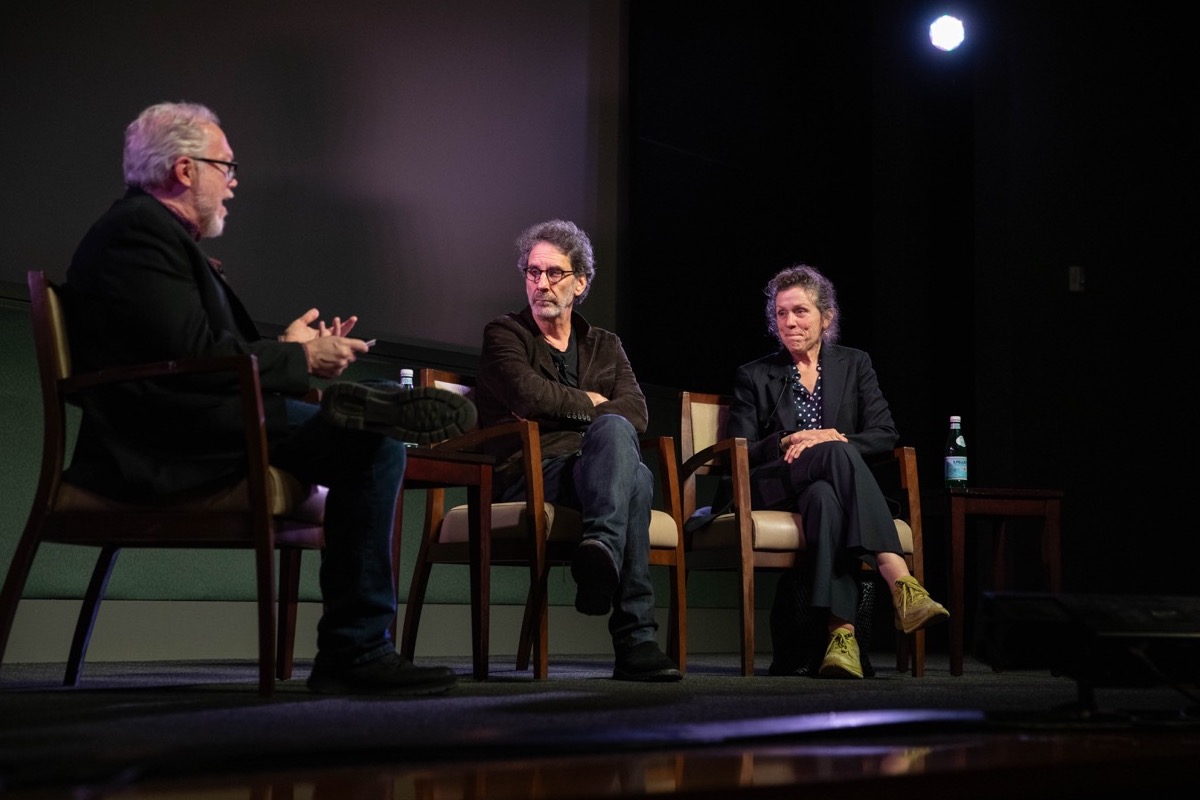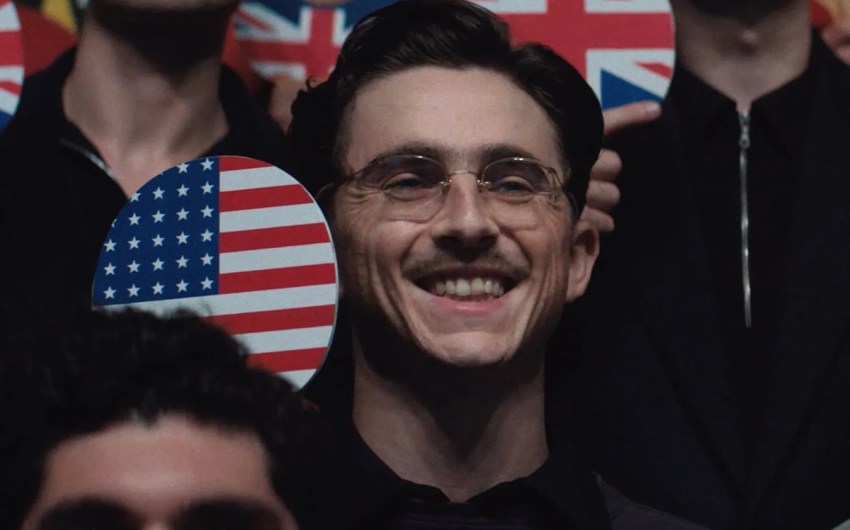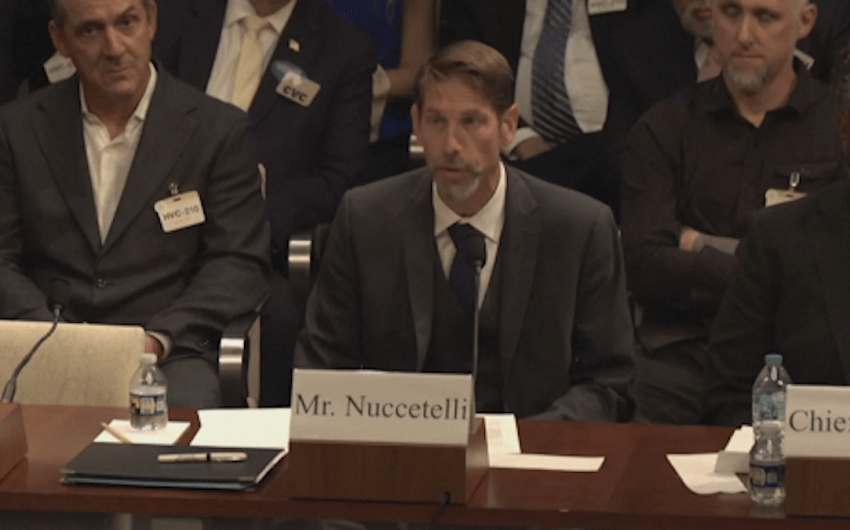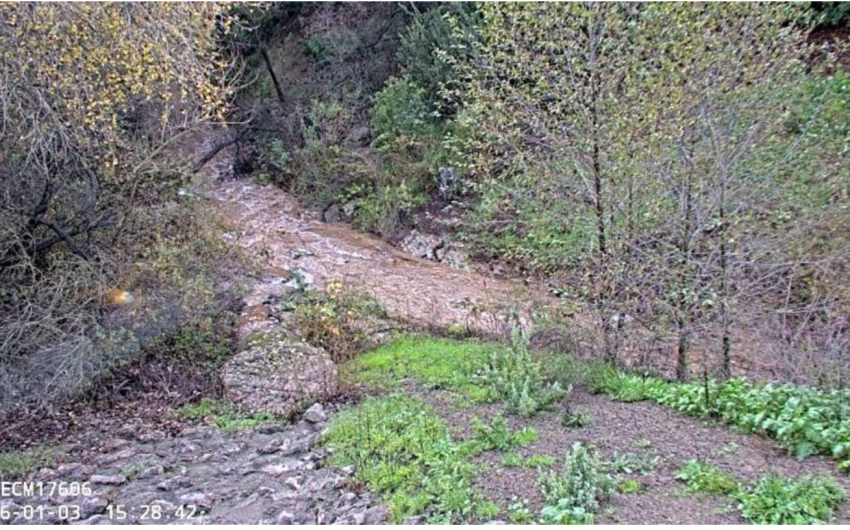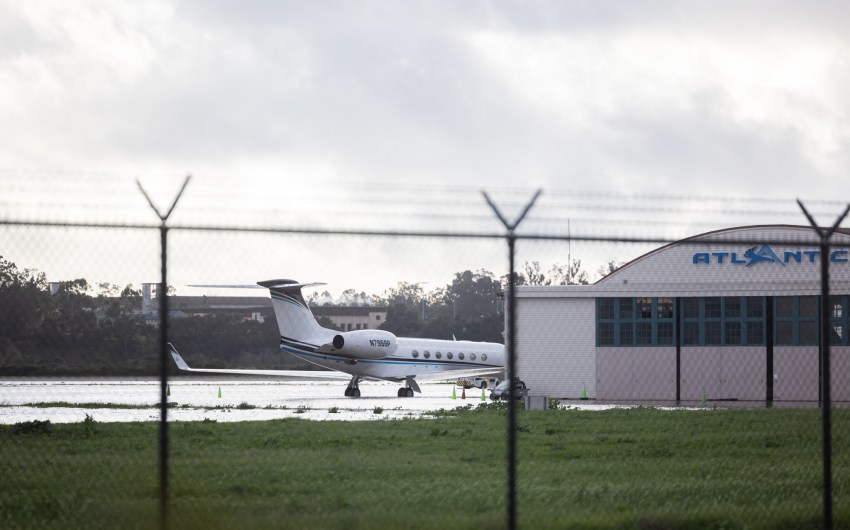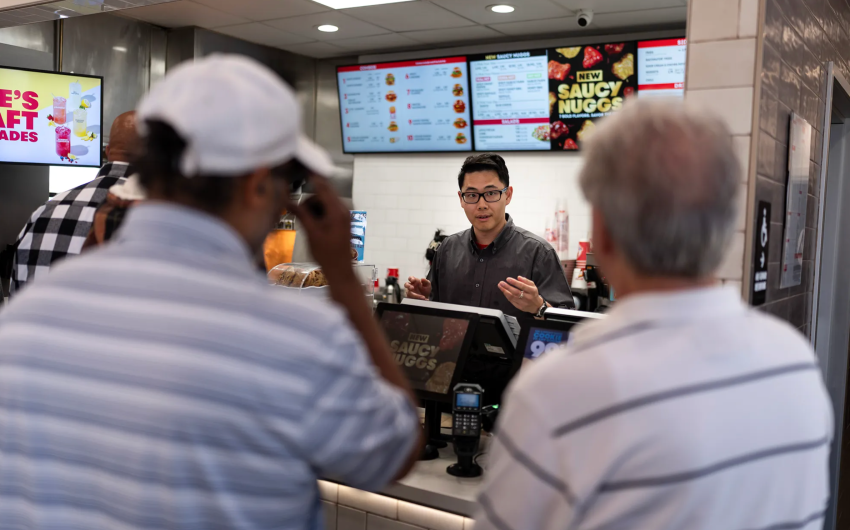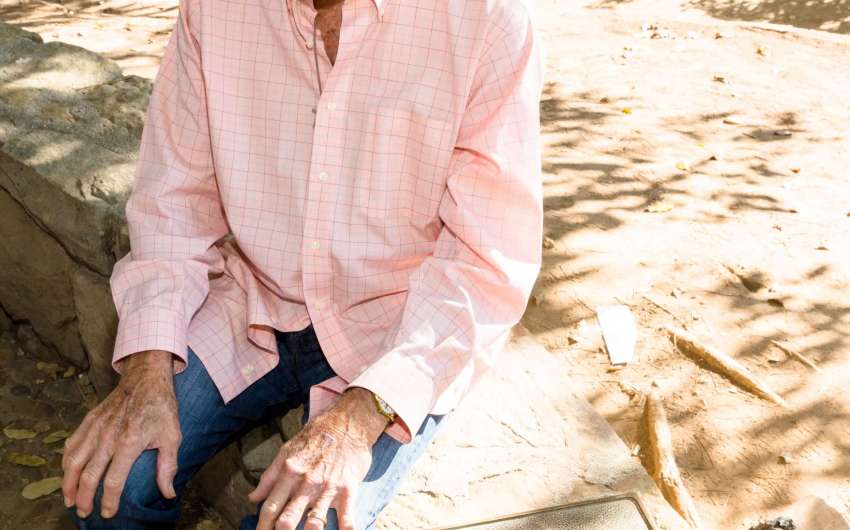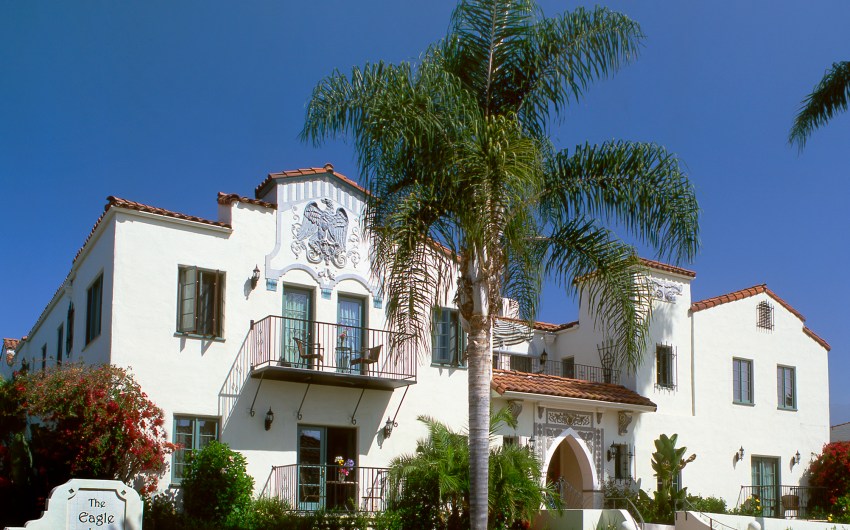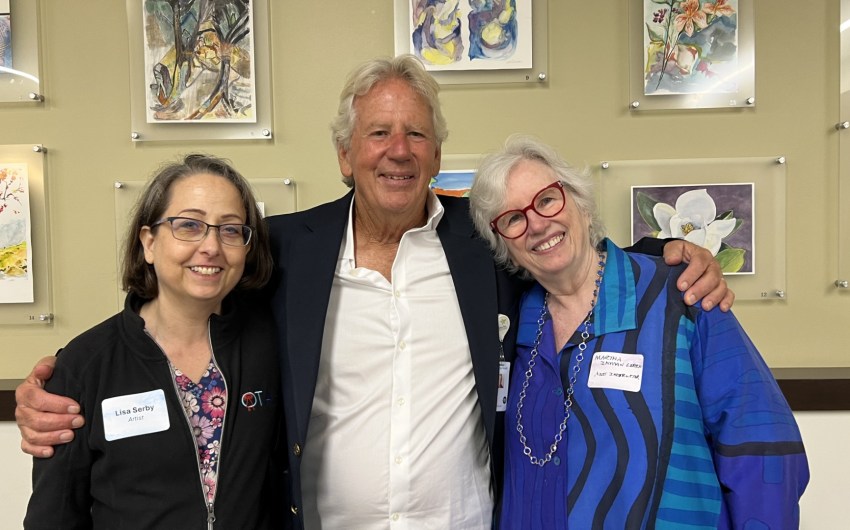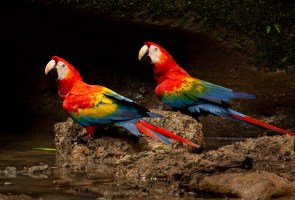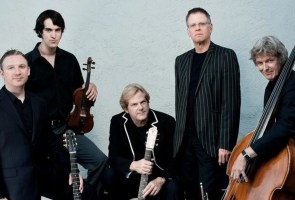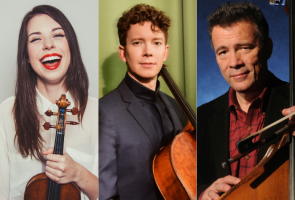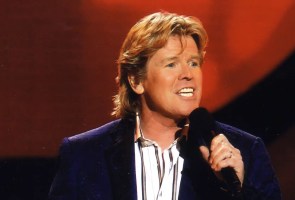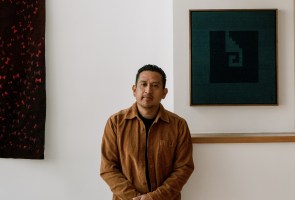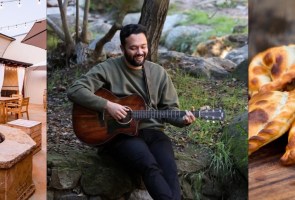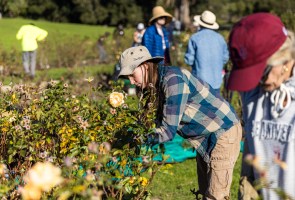Joel Coen’s moody, expressionistic black and white version of The Tragedy of Macbeth was the focus of the Carsey-Wolf Center at UCSB’s Revisiting the Classics at the Pollack Theater on Thursday, February 29.
The 2021 film, starring Denzel Washington as the ambitious Scottish warrior and Frances McDormand as Lady Macbeth, highlights the power of chiaroscuro, at times harkening back to the dawn of cinema, where the soundstage itself played an important role in the filmmaking process. In addition to commanding performances by Washington and McDormand, Coen’s version of Macbeth memorably features the weird and wonderful Kathryn Hunter playing all three Witches, Alex Hassell as the uber-manipulative Ross, and Moses Ingram in a brief but indelible turn as Lady Macduff.
Following the screening, UCSB English professor and Shakespeare scholar Jim Kearney was joined on stage by the husband and wife team of Coen and McDormand (who also produced the film) for a wide-ranging conversation. Kearney was relaxed yet precise as moderator, rightly praising “the elegance of the [film’s] cuts, and the clarity of the script,” which was adapted from Shakespeare’s original by the director. Coen was calm and pensive, while McDormand crackled with barely contained electricity.
Asked about the experience of directing a play as a movie, Coen distinguished theater from filmmaking: “The essence of cinema is what you’re looking at, where you’re looking at it, and how long you’re looking at it.”
In McDormand’s words, “Joel made it so you didn’t have to understand the verse to understand what’s happening” on screen.
Both the director and actor were sympathetic to the Macbeths, who are often portrayed as bloodthirsty and ruthless. McDormand described them as “an older couple who’ve had a long marriage. And this is kind of their last chance.” Coen added, “It’s a good marriage, but they just happen to be planning to kill someone.” McDormand noted that because the couple was childless, the murder of King Duncan was an opportunity for Lady Macbeth “to give her husband the crown instead.”
Coen clearly relished collaborating with cinematographer Bruno Delbonnel, who worked with the Coen brothers on Inside Llewyn Davis and The Ballad of Buster Scruggs. The controlled environment of the studio allowed for the spectacular lighting effects that would have been impossible had the filmmakers, in Coen’s words, shot onsite, employing “a sort of rent-a-castle thing.”
The filming of Macbeth was interrupted by the onset of the pandemic, but resumed five months later. Both Coen and McDormand described the cast as “the company,” and indicated that the three weeks spent rehearsing the film prior to shooting — unusual for Coen — was essential in the bonding that allowed them to complete the project so seamlessly.
Not surprisingly for a couple who have themselves been married for 38 years, McDormand and Coen were in sync all evening, clarifying and amplifying each other’s comments with a deftness and subtlety that would have made Macbeth and his Lady proud.
The Carsey-Wolf Center at UCSB’s Revisiting the Classics series continues this week with a sold-out screening of Who Framed Roger Rabbit, followed by a discussion with associate producer Steve Starkey and screenwriter Peter S. Seaman. See carseywolf.ucsb.edu for a list of all upcoming events, which are generally free and open to the public with priority given to students. You can also join the email list here to be notified of future screenings and discussions.
Premier Events
Fri, Jan 09
5:30 PM
Santa Barbara
Intention Setting & Candle Making Workshop
Sun, Jan 11
3:00 PM
Santa Barbara
Mega Babka Bake
Fri, Jan 23
5:00 PM
Santa Barbara
Divine I Am Retreat
Tue, Jan 06
7:00 PM
Santa Barbara
Amazonia Untamed: Birds & Biodiversity
Wed, Jan 07
7:30 PM
Santa Barbara
SBAcoustic Presents the John Jorgenson Quintet
Thu, Jan 08
5:30 PM
Santa Barbara
Blueprints of Tomorrow (2026)
Thu, Jan 08
6:00 PM
Isla Vista
Legal Literacy for the Community
Thu, Jan 08
7:30 PM
Santa Barbara
Music Academy: Lark, Roman & Meyer Trio
Fri, Jan 09
8:00 AM
Santa Barbara
Herman’s Hermits’ Peter Noone: A Benefit Concert for Notes For Notes
Fri, Jan 09
6:00 PM
Santa Barbara
Ancestral Materials & Modernism
Fri, Jan 09
6:00 PM
Montecito
Raising Our Light – 1/9 Debris Flow Remembrance
Fri, Jan 09
7:00 PM
Santa Barbara
Barrel Room Sessions ~ Will Breman 1.9.26
Sat, Jan 10
9:00 AM
Santa Barbara
Rose Pruning Day | Mission Historical Park
Fri, Jan 09 5:30 PM
Santa Barbara
Intention Setting & Candle Making Workshop
Sun, Jan 11 3:00 PM
Santa Barbara
Mega Babka Bake
Fri, Jan 23 5:00 PM
Santa Barbara
Divine I Am Retreat
Tue, Jan 06 7:00 PM
Santa Barbara
Amazonia Untamed: Birds & Biodiversity
Wed, Jan 07 7:30 PM
Santa Barbara
SBAcoustic Presents the John Jorgenson Quintet
Thu, Jan 08 5:30 PM
Santa Barbara
Blueprints of Tomorrow (2026)
Thu, Jan 08 6:00 PM
Isla Vista
Legal Literacy for the Community
Thu, Jan 08 7:30 PM
Santa Barbara
Music Academy: Lark, Roman & Meyer Trio
Fri, Jan 09 8:00 AM
Santa Barbara
Herman’s Hermits’ Peter Noone: A Benefit Concert for Notes For Notes
Fri, Jan 09 6:00 PM
Santa Barbara
Ancestral Materials & Modernism
Fri, Jan 09 6:00 PM
Montecito
Raising Our Light – 1/9 Debris Flow Remembrance
Fri, Jan 09 7:00 PM
Santa Barbara
Barrel Room Sessions ~ Will Breman 1.9.26
Sat, Jan 10 9:00 AM
Santa Barbara

